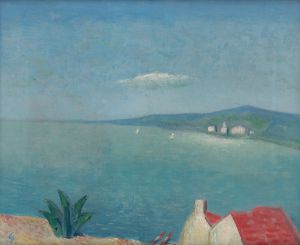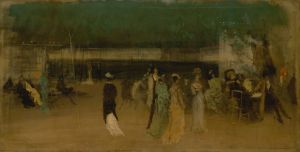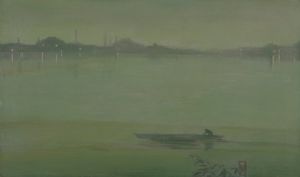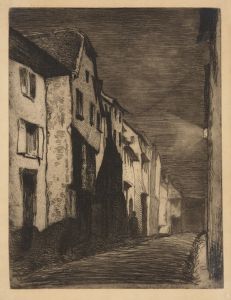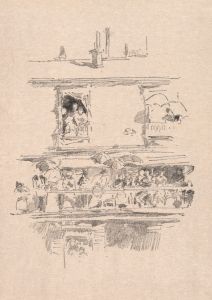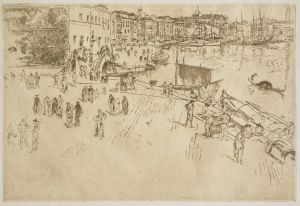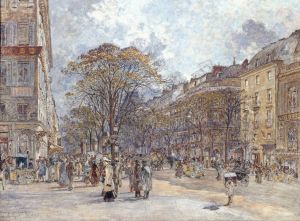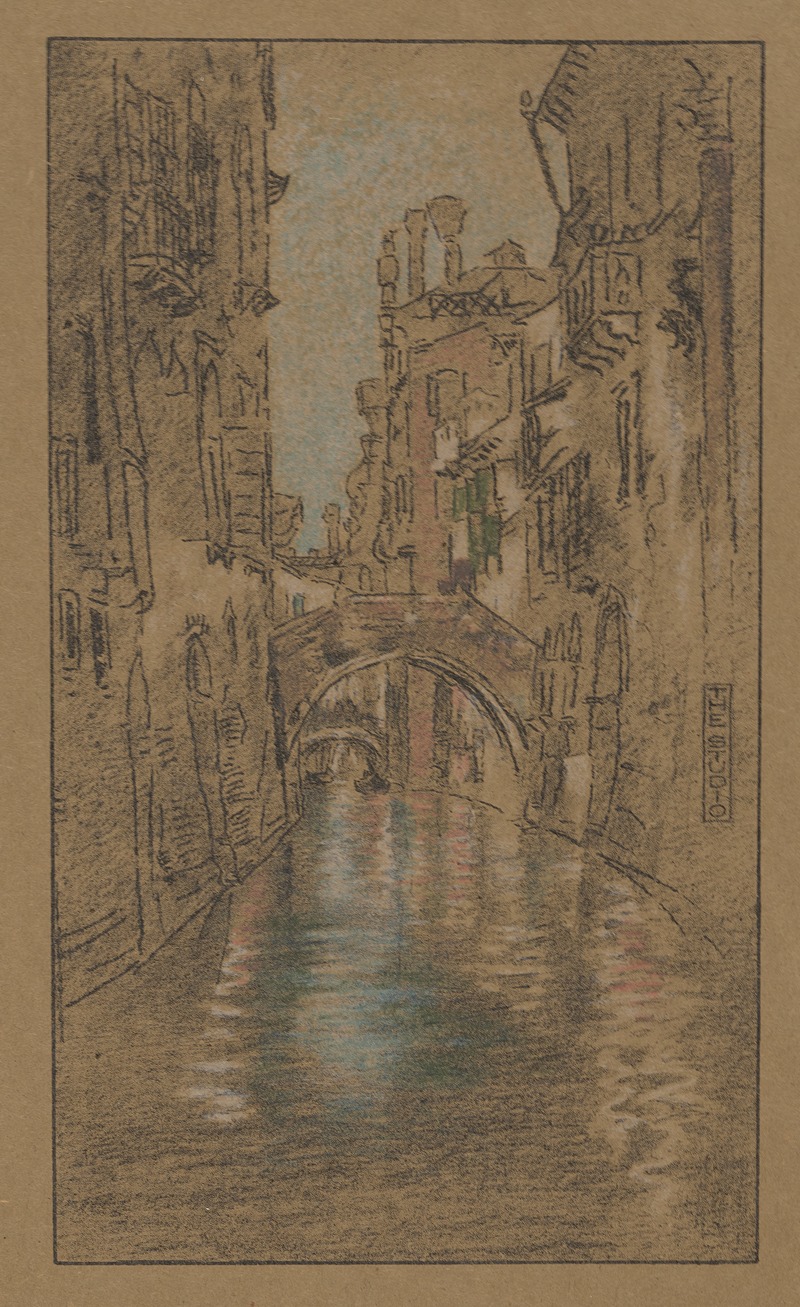
A Venetian canal
A hand-painted replica of James Abbott McNeill Whistler’s masterpiece A Venetian canal, meticulously crafted by professional artists to capture the true essence of the original. Each piece is created with museum-quality canvas and rare mineral pigments, carefully painted by experienced artists with delicate brushstrokes and rich, layered colors to perfectly recreate the texture of the original artwork. Unlike machine-printed reproductions, this hand-painted version brings the painting to life, infused with the artist’s emotions and skill in every stroke. Whether for personal collection or home decoration, it instantly elevates the artistic atmosphere of any space.
"A Venetian Canal" is a painting by the American artist James Abbott McNeill Whistler, created during his time in Venice. Whistler, born on July 10, 1834, in Lowell, Massachusetts, is renowned for his contributions to the Aesthetic Movement and his innovative approach to art, which emphasized the harmony of color and composition over the subject matter.
Whistler arrived in Venice in September 1879, following a financially and emotionally taxing libel suit against the art critic John Ruskin. The lawsuit, which Whistler won, left him in a precarious financial situation, prompting his move to Venice, where he sought both artistic inspiration and a fresh start. During his 14-month stay, Whistler produced a significant body of work, including etchings, pastels, and paintings that captured the unique atmosphere and architecture of the city.
"A Venetian Canal" is one of the many works Whistler created that depict the serene and picturesque waterways of Venice. The painting showcases his mastery in capturing the interplay of light and water, a hallmark of his Venetian works. Whistler's technique often involved a limited palette and subtle tonal variations, which he used to evoke the mood and ambiance of the scene rather than focusing on detailed representation.
In "A Venetian Canal," Whistler employs a delicate balance of color and form to convey the tranquil beauty of the Venetian waterways. The composition typically features the narrow, winding canals lined with historic buildings, their reflections shimmering on the water's surface. Whistler's brushwork is characterized by its fluidity and economy, capturing the essence of the scene with minimal yet expressive strokes.
Whistler's time in Venice was a period of significant artistic growth and experimentation. He was particularly influenced by the city's unique light and the way it interacted with the architecture and water. This influence is evident in "A Venetian Canal," where the interplay of light and shadow creates a sense of depth and atmosphere. The painting reflects Whistler's belief in "art for art's sake," where the aesthetic experience is paramount, and the subject matter serves as a vehicle for exploring visual harmony.
Whistler's Venetian works, including "A Venetian Canal," were well-received upon his return to London. They were exhibited at the Fine Art Society in 1880 and 1883, garnering critical acclaim and helping to restore his reputation and financial stability. These works are considered some of the finest examples of Whistler's mature style, showcasing his ability to blend realism with a poetic sensibility.
Today, "A Venetian Canal" is appreciated for its contribution to the Aesthetic Movement and its reflection of Whistler's innovative approach to painting. The work continues to be studied and admired for its technical mastery and its ability to evoke the serene beauty of Venice through Whistler's distinctive artistic vision.






